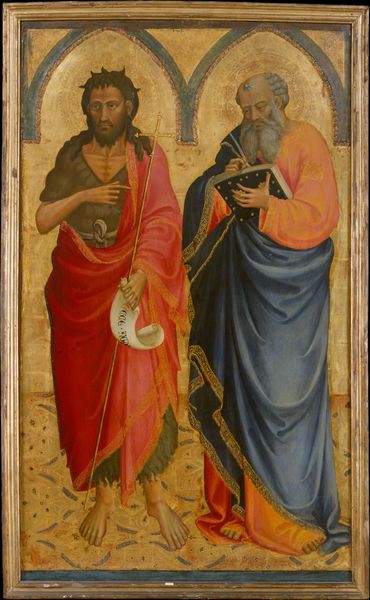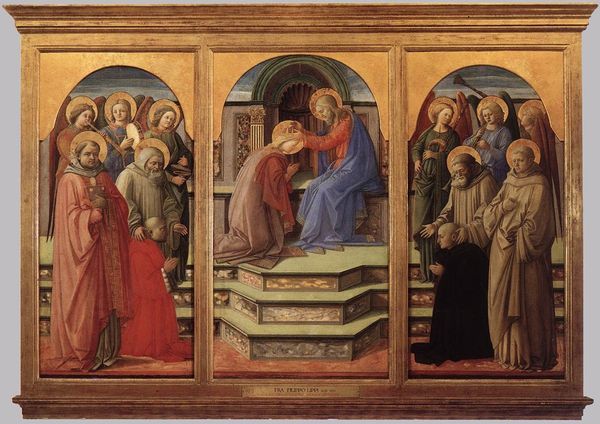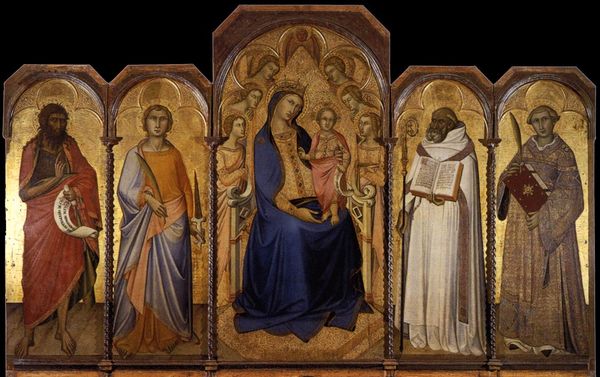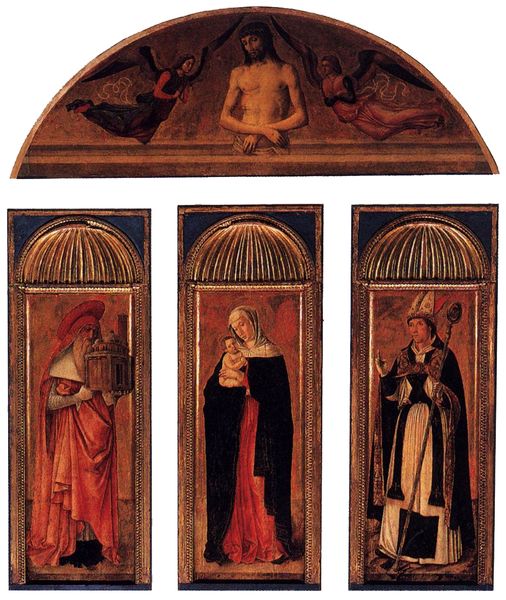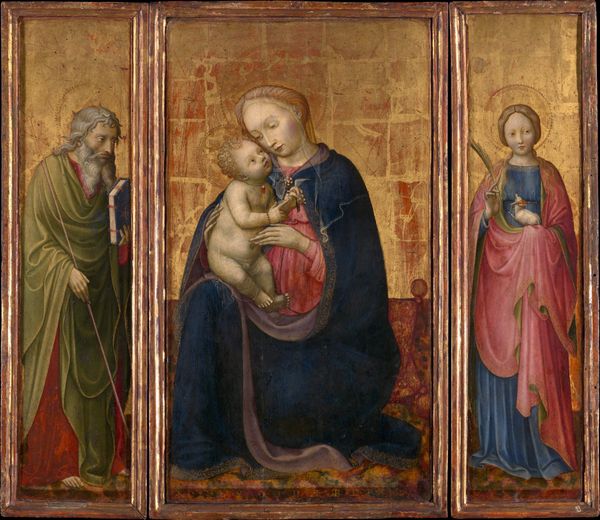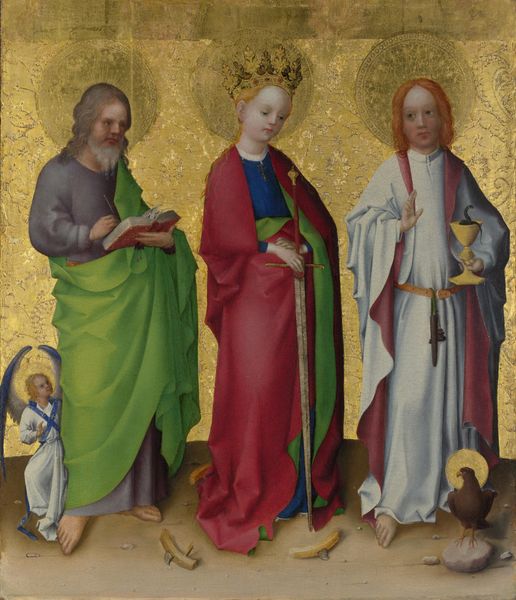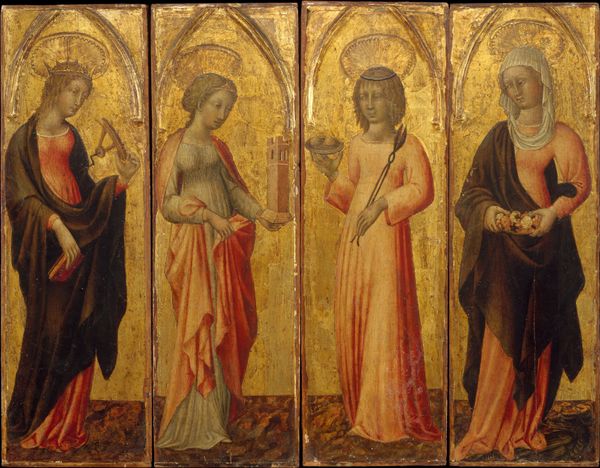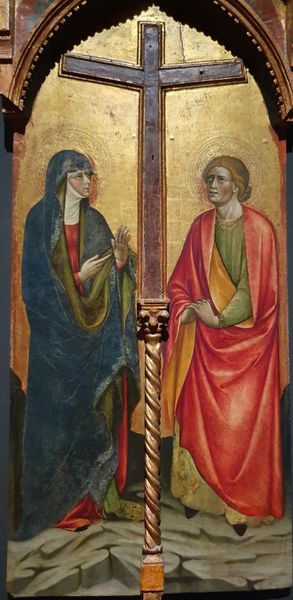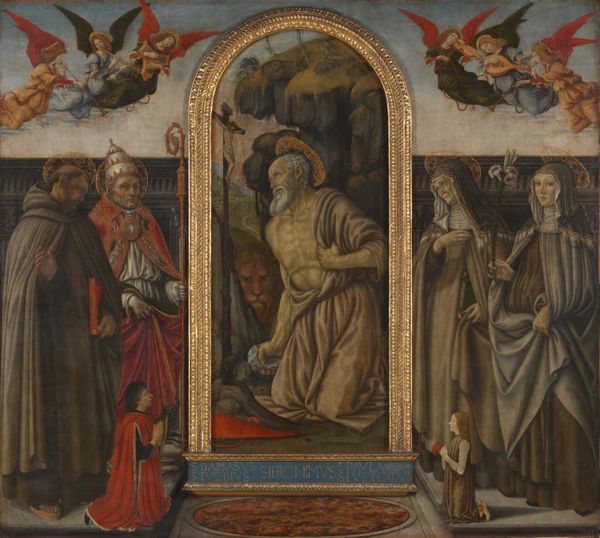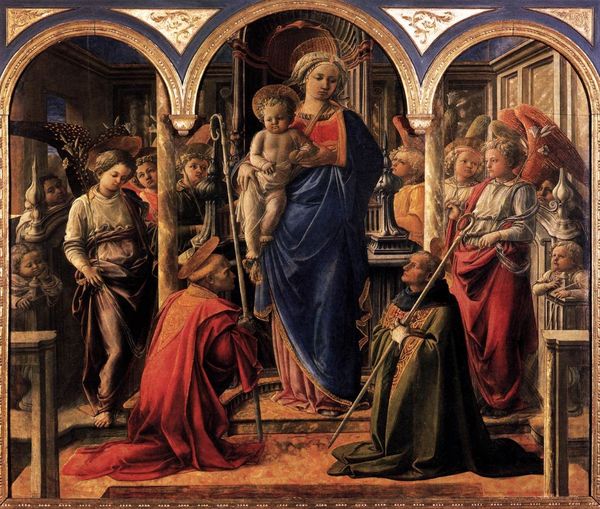
tempera, painting
#
portrait
#
tempera
#
painting
#
oil painting
#
christianity
#
history-painting
#
italian-renaissance
#
early-renaissance
#
portrait art
Dimensions: 65 x 129 cm
Copyright: Public domain
Curator: Here we have Filippo Lippi's "The Doctors of the Church," tempera on panel, painted around 1437. Editor: The initial feeling I get is one of solemnity, almost severity. The figures are so still, and the muted palette reinforces that sense of gravitas. The lines of their robes are simple, but clearly meticulously observed. Curator: Precisely! Notice how Lippi employs those gentle colors and gradients to model the heavy, draped fabrics. The interplay between light and shadow emphasizes volume and dimension. Lippi uses color in symbolic ways as well to help illustrate and represent these important figures. Editor: Thinking about it more historically, depictions like this would have reinforced the authority and wisdom of the Church at a critical juncture. The controlled, almost detached expressions perhaps communicate the divine knowledge these figures were believed to possess, and that knowledge grants access to social influence. Curator: You see how their robes, their faces, their physical presence embodies both reality and symbolism! The halos floating around the figures are spatially ambiguous, however the linear detail is crisp and confident which indicates to the viewer their sacredness, adding another layer to the surface. The colors on either side add a kind of symmetry that enhances this effect as well. Editor: And what about the individuals being depicted? To be able to afford these kinds of religious and historical depictions was also only privy to a select elite class. Art and social power are intimately connected during this era. These were not public images. These paintings existed primarily for a noble class that desired this sort of painting. Curator: You bring up an essential point, underscoring the critical relationship between patronage and artistic production during the Early Renaissance. Editor: Looking at "The Doctors of the Church" through these varying lenses deepens one’s appreciation of its intrinsic artistry and its significance within the socio-cultural fabric of its time. Curator: Absolutely, together these analytical viewpoints unveil this panel's depth of meaning and craftsmanship, inviting everyone to discover this world further.
Comments
No comments
Be the first to comment and join the conversation on the ultimate creative platform.
